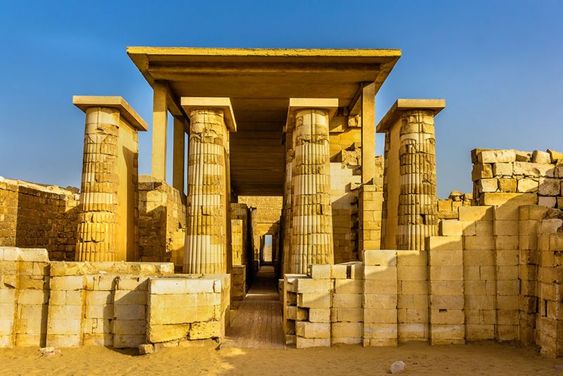share

Introduction Nestled near the modern-day village of Mit Rahina, just 20 kilometers south of Cairo, lies one of the most historically significant archaeological sites in Egypt: Memphis. This ancient city was once a thriving metropolis and served as the capital of Egypt during the Old Kingdom. Today, Memphis stands as a testament to Egypt’s illustrious past, offering invaluable insights into one of the earliest and most influential civilizations in human history. Historical Significance Founded around 3100 BCE by the legendary Pharaoh Menes (or Narmer), Memphis marked the unification of Upper and Lower Egypt. This event set the stage for the development of one of the world’s earliest and most enduring civilizations. During the Old Kingdom period (c. 2686–2181 BCE), Memphis was the political and cultural heart of Egypt, playing a pivotal role in the administration and economy of the country. Geography and Layout Strategically situated at the entrance to the Nile Delta, Memphis was ideally positioned for trade and defense. The city was laid out with a central temple district, which was surrounded by residential and administrative areas. This organization reflects the typical urban planning of ancient Egypt, with the religious and political centers at its core. Major Monuments and Structures The Great Temple of Ptah: Central to Memphis was the Great Temple of Ptah, dedicated to the creator god and patron of craftsmen. The temple complex was one of the largest and most important in ancient Egypt, symbolizing Memphis's religious significance The Pyramid of Djoser: Located at Saqqara, just a short distance from Memphis, the Pyramid of Djoser is one of the earliest pyramids and a landmark in the evolution of pyramid construction. Built for Pharaoh Djoser, it is an architectural marvel of the Third Dynasty and a precursor to the more famous pyramids of Giza. Statues and Sphinxes: Memphis was renowned for its monumental statues and sphinxes. The Colossus of Ramses II, a massive statue of one of Egypt’s most famous pharaohs, once stood at the entrance of the temple of Ptah, highlighting the city’s grandeur. Cultural and Religious Importance Memphis was more than just a political capital; it was a center of religion and culture. The city was the focal point of the Memphite Theology, which worshipped Ptah as the creator of the universe. This theological system influenced many aspects of Egyptian religion and culture, leaving a lasting legacy. Decline and Rediscovery As Egypt’s capital shifted to Thebes during the Middle Kingdom (c. 2055–1650 BCE), Memphis’s political and economic importance waned. Over time, the city fell into disrepair and was eventually abandoned. However, the site was rediscovered by modern archaeologists in the 19th century. Excavations have unearthed many of its ruins and artifacts, providing a deeper understanding of ancient Egyptian civilization. Preservation and Modern Significance Today, Memphis is an important archaeological site and a key destination for those interested in ancient Egyptian history. The site continues to be a focus of archaeological research, with ongoing efforts to preserve and study its remnants. Among the highlights are the colossal statues, the remnants of the Great Temple of Ptah, and the nearby Saqqara necropolis, which collectively offer a glimpse into the grandeur of Memphis and its role in shaping the ancient world. Conclusion Memphis, near Cairo, is not just an archaeological site; it is a symbol of Egypt’s rich and storied past. From its strategic location and architectural marvels to its cultural and religious significance, the ancient city provides a window into the early achievements of one of history’s most influential civilizations. As research and preservation efforts continue, Memphis remains a vital link to understanding the origins and development of ancient Egyptian society.
Together We Can Make Awesome Memories
Are You Ready To Join Us On Your Next Trip?
we believe that travel should be more than just sightseeing. It should be an enriching experience that broadens your horizons and leaves you with lasting memories.
informations
helpful links
- services
- supports
- terms and condition
- privacy
our services
- photography
- suport 24/7
- guide

